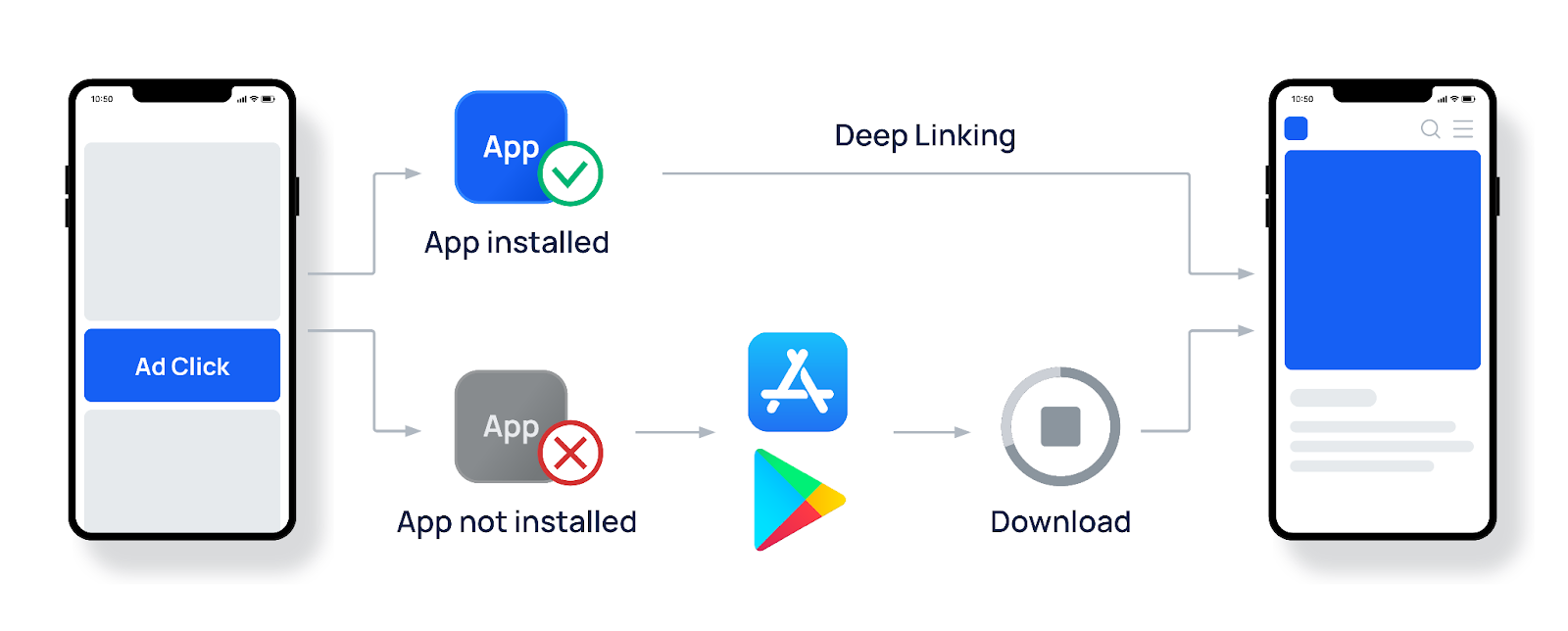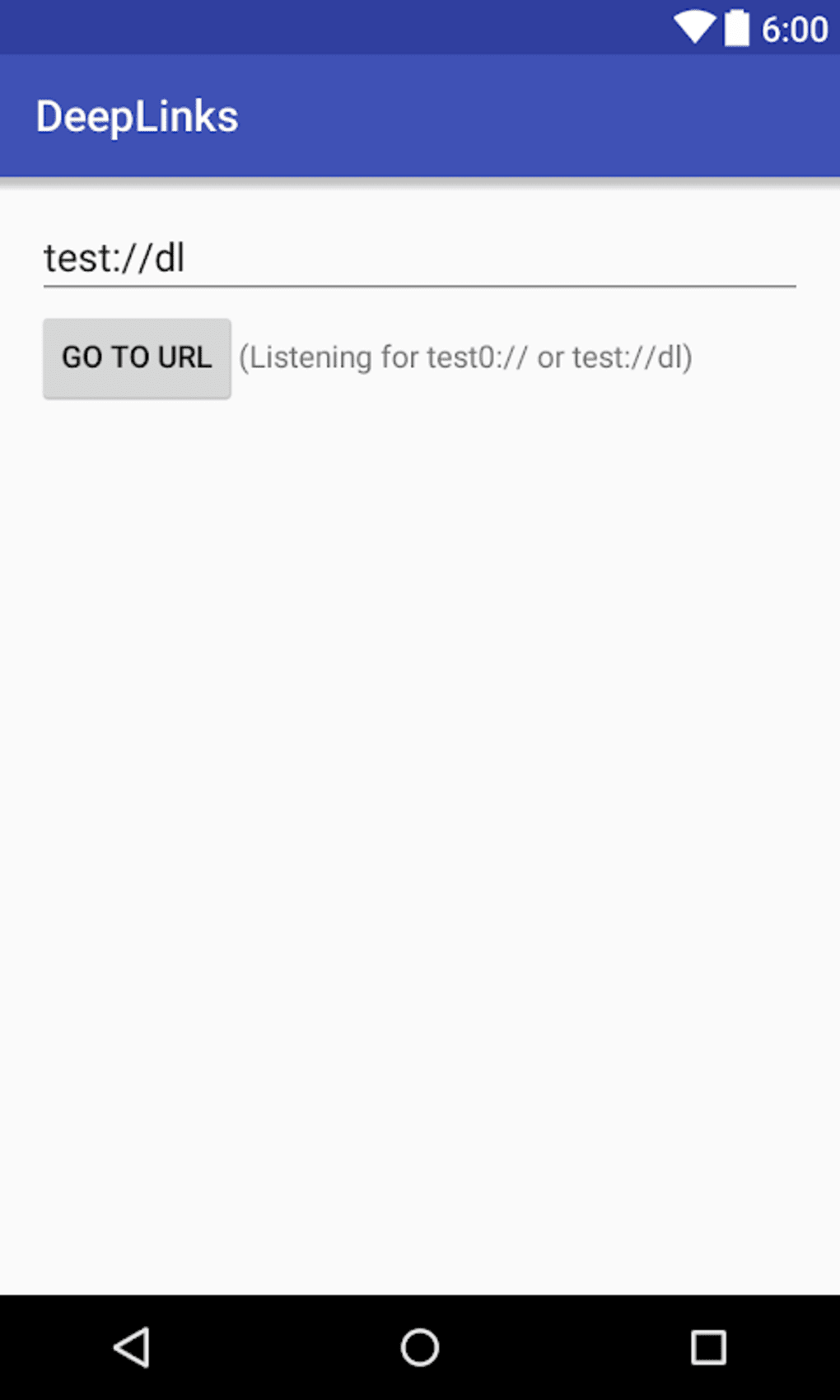Deep Linking: Your Guide To SEO Success & User Experience
In a world teeming with information, have you ever wished for a shortcut to the exact content you need? Thats the promise of deep linking, and mastering it is no longer optional it's essential.
Deep links, at their core, are URLs designed to transport users directly to a specific page or section within an application or website. This functionality allows users to bypass the general landing page, immediately accessing the desired content. The digital world is evolving at an unprecedented pace, and as it does, the ability to skillfully wield deep linking has become increasingly critical. This article aims to be your comprehensive guide, demystifying the art and science of deep linking and its profound implications for digital success.
Consider the frustration of arriving at a website's homepage when you're searching for a particular product or piece of information. Deep linking eradicates this friction. It's about providing immediate access to relevant information, enhancing user experience, and boosting efficiency. But how does it work?
- Telugu Cinema 2025 5 Rules Upcoming Movies To Watch
- Aditi Mistry Nipple Slip Incident Its Impact What You Need To Know
Deep hot links function by incorporating specific URL parameters that lead to targeted content. In essence, they're designed to create direct, seamless connections to specific content within a website or application, offering a user experience that's both intuitive and efficient. Whether youre a digital novice or a seasoned tech enthusiast, understanding deep linking is no longer a luxury, but a necessity in todays competitive digital landscape.
The Mechanics of Deep Linking
The effectiveness of deep linking hinges on several key components. To create an effective deep hot link, you need to consider the following:
- The main address of your website: This is the foundational element the starting point of your digital journey.
- The specific path to the desired page or resource: This is the route you create to guide users to precisely where they need to be. Think of it as the precise street address within a city (your website).
- Optional parameters that can provide additional context or instructions: These are the fine-tuning elements that provide extra information and instructions, ensuring users arrive with the right information or are presented with the correct experience.
By strategically employing these components, you can craft deep links that directly engage users and drive them toward the information or actions you want them to take. For example, imagine a news article about a recent technological breakthrough. Instead of linking to the homepage, a deep link would take the user directly to the article itself, enhancing engagement and saving time.
- Jackermans Warmth The Heart Of Chapter 3 Maternal Love
- Fikfap Explained Your Ultimate Guide To The Viral Trend
The Benefits
The benefits of deep linking are many and multifaceted. From improving user experience to boosting SEO, the advantages are undeniable.
- Enhanced User Experience: Deep links eliminate unnecessary navigation, leading to a smoother and more enjoyable user experience. By directing users straight to their desired content, you save them time and reduce frustration.
- Improved SEO: Deep linking can significantly enhance your websites SEO. Search engines value direct links to specific content, leading to higher rankings and increased visibility.
- Increased Engagement: By directly addressing the user's needs, deep links encourage increased engagement with your content. Users are more likely to stay and explore when they quickly find what they are looking for.
- Higher Conversion Rates: In the context of e-commerce or lead generation, deep links to product pages or specific offers can significantly improve conversion rates. The user is just a click away from taking the desired action.
In today's digital landscape, the ability to direct users with precision can be the difference between success and failure. Mastering the art of deep linking isn't just about technical know-how, its about understanding how people interact with information and crafting an online experience that meets their needs head-on.
Deep Linking in Action
Deep linking finds applications across diverse digital environments. Here are a few examples of how it can be used:
- E-commerce: Directing users to specific product pages from social media ads or email campaigns.
- Content Marketing: Linking to individual articles, blog posts, or videos from newsletters, social media, and other marketing materials.
- App Development: Integrating deep links within apps to guide users to specific in-app features and content.
- News and Media: Sharing direct links to specific articles or sections within a news website or app.
The possibilities are virtually endless, and the more creative you are with your implementation, the more effective your digital strategy will be.
One of the key applications of deep linking involves its use in digital marketing. Digital marketers can leverage deep links to create more effective campaigns, improving click-through rates and driving conversions. For example, when running an ad on a social media platform, a deep link can guide users directly to a specific product page or a targeted landing page, eliminating the need for users to navigate through multiple pages.
In the vast landscape of digital marketing, the term deep hot link has emerged as a crucial concept for website optimization and user engagement. By allowing users to connect directly to specific content within a website, these links enhance the user experience and facilitate seamless navigation.
Deep Hot Link Com
Deep hot link com is a term that has been gaining attention in the digital landscape, particularly among web developers and digital marketers. But what does it mean? Simply put, it reflects the evolving digital landscape, highlighting the importance of creating connections directly to specific content within a website or application. This allows users to bypass the general landing page and access the desired content directly.
Whether you are a digital marketer, web developer, or simply a curious internet user, understanding how deep hot linking can elevate your online strategies is crucial in the current digital world.
Web site owners who do not want search engines to deep link, or want them only to index specific pages can request so using the robots exclusion standard (robots.txt file).
Understanding their implementation and associated considerations is vital for optimizing digital experiences. By the end of this piece, you will be equipped with the knowledge and tools necessary to implement deep hot linking effectively in your digital projects.
So listen up, folks, because we're diving deep into the world of deep hot link, a term that might sound a little mysterious but trust me, it's about to become y drama queens & kings drama queens & kings. In today's competitive digital landscape, understanding how to effectively implement these strategies can make all the difference in your website's performance
The Robots Exclusion Standard and Deep Linking
Website owners have the ability to control how search engines interact with their sites. The robots exclusion standard, often implemented via a robots.txt file, allows owners to dictate which pages search engines should index and which they should avoid. This can be used to prevent search engines from deep linking to specific content, or to specify precisely which pages they are allowed to access. Careful use of this standard is crucial for optimizing a websites SEO and protecting content that shouldnt be publicly accessible.
The Future of Deep Linking
As the digital landscape continues to evolve, the importance of mastering deep linking cannot be overstated. From improving user experience to boosting SEO, the benefits of this strategy are undeniable. The deep hot link plays a pivotal role in that transformation.
This article aims to demystify deep hot linking, exploring the core concepts, practical applications, and benefits. Deep hot link is a term that often surfaces in discussions about digital content sharing and online marketing strategies. In todays interconnected world, where information travels at lightning speed, understanding the nuances of deep hot linking can significantly impact how we share and consume content online.
The digital age has transformed how we navigate information, and the deep hot link plays a pivotal role in that transformation. By allowing users to connect directly to specific content within a website, these links enhance the user experience and facilitate seamless navigation. Unlike standard links, which may lead to a sites main page, deep hot links facilitate direct access to articles, product pages, or other relevant resources, enhancing the user's journey.
In summary, deep links provide a powerful mechanism for directing users to specific content, enhancing usability and efficiency.
Deep links are URLs that open a specific page or section within an app. This allows users to be taken directly to the content they are looking for. They enhance user experience and provide immediate access to relevant information.
The next section will explore practical applications of deep links in different digital environments.
To create an effective deep hot link, you need to consider the following components: The main address of your website, the specific path to the desired page or resource, and optional parameters that can provide additional context or instructions.
The Art of Crafting Deep Links
Creating effective deep links is both an art and a science. It requires a solid understanding of your website's structure, the content you wish to highlight, and how users will interact with the links. Here are some practical steps:
- Identify Your Target Content: Determine the specific page or section you want your deep link to direct users to.
- Understand the URL Structure: Familiarize yourself with how your website's URLs are constructed. This includes the domain name and the specific path to your content.
- Use Parameters Strategically: Employ URL parameters to add context and instructions to your links. This might involve tracking campaigns, setting specific filters, or pre-populating forms.
- Test Thoroughly: Always test your deep links to ensure they work correctly and lead users to the intended destination.
- Monitor Performance: Track the performance of your deep links using analytics tools. This will help you understand which links are most effective and identify areas for improvement.
By paying careful attention to these details, you can create deep links that not only guide users directly to the content they want but also provide valuable insights into user behavior and campaign effectiveness.
Understanding the nuances of deep hot linking can significantly impact how we share and consume content online. Deep hot links refer to hyperlinks that direct users to specific content or pages within a website rather than just the homepage.
AI and Deep Linking in Marketing
Welcome to our ultimate guide on ai in digital marketing. This comprehensive guide looks to demystify ai's role in reshaping the landscape of digital marketing.
We will journey through the exciting world of ai, exploring its myriad applications in digital marketing, the advantages it brings, the challenges it presents, and a glimpse into the
Link to content that has embedded offers and ctas. These are designed to get cold traffic into your funnels. Amp modelling has always focused on trying to replicate existing real world amps in the digital domain.
- Unveiling Nagi Hikaru 385 Life Career Legacy
- Tan Chuan Jin Divorce Media Coverage Public Reaction Latest

The Ultimate Guide To Deep Hot Link Website A Digital Revolution

Deep Dive Into Deep Hot Links Mastering SEO

Mastering Www.deep Hot Link A Guide To Understanding And Utilizing Its